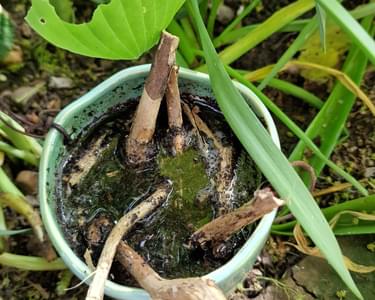Three ways to nurture nature in your vegetable plot

The design is done, the plants are growing and we're really excited to be revealing our 'Rooted in Nature' show garden at BBC Gardeners' World Live between 12-15 June - kindly sponsored by green mobile network Ecotalk.
Designed with Chris Collins, our our head of organic horticulture, we wanted the show garden to inspire people to combine food and nature in one growing space. We believe the more you mix up your planting, the better for wildlife - and your veg patch is no exception.
There will be lots of ideas to gather over the four days, so please come and visit our stands at GA2 and G213. Here's just three ways of the nature and food take-outs...
1. Mix flowers with your veg for natural 'pest' control
An attractive way to bring in vital pollinators while reducing the need for pesticides, is to combine rows or containers of vegetables with flowers. Central to our Ecotalk show garden is a vegetable patch, packed with diverse heritage vegetables from our Heritage Seed Library that are intermingled with companion flowers such as snapdragons, marigold, nigella and herbs.
Have a go at using these combinations in your growing space:
- Calendula and cabbage. Insects such as hoverflies and ladybirds will be attracted to the Calendula flowers and act as predators to the brassica-loving cabbage white caterpillar!
- Nasturtiums and beans. Juicy nasturtium leaves and their brightly coloured flowers pull blackfly away from your beans.
- Crimson clover and fruit bushes. Grow strips of this green manure between fruit bushes to attract insects but also add nutrients. If mown regularly, the cuttings can be thrown under the bushes, where the nitrogen-rich leaves break down quickly to supply nutrients to the trees.
2. Fill your garden with holes, hotels and hideaways
Insect habitats are a key feature of our Ecotalk Rooted in Nature garden. Some of our clever bug-friendly elements include rot holes, hoverfly lagoons and a hibernaculum.
Here’s how to make a hoverfly lagoon:
- Some species of hoverfly like to lay eggs in stagnant water, which is rich in organic matter. The larvae breathe through snorkel-like breathing tubes and eat microbes in the water before hatching into adults after four weeks.
- Find a small to medium pot without drainage holes – you could get children to decorate it - and half fill with water.
- Add dead leaves and some garden soil. Place a few twigs inside, with the ends sticking out so the hoverfly larvae can climb out.
- Sink into the ground near your plants.
3. Dip into forest gardening
Forest gardening is all about food production systems that are intended to emulate what happens naturally in a woodland system. A typical example would be:
- A large fruit tree at canopy level.
- Below this a smaller tree, possibly a fruit tree on dwarfing stock.
- Further down shrubs such as currants - also called the 'understorey'.
- Then an herbaceous level, for example rhubarb, and ground cover plants such as strawberries.
- Finally, there would be roots and some vertical planting such as a vine.
The plants are diverse and productive or useful (medicinal, good for pollinators, etc). And in our Ecotalk 'Rooted in Nature' garden we are showcasing growing edibles under trees in a nod to this system.
As our garden is based around nature and food, we chose silver birch trees as they support a wide array of UK native wildlife. Our understorey is currants, the herbaceous level chives and our ground cover strawberries. It's a great way of demonstrating just how many edibles can be grown in a small area while still providing havens for wildlife!
